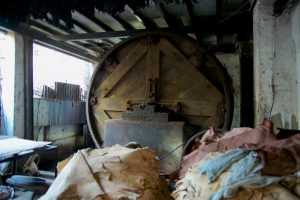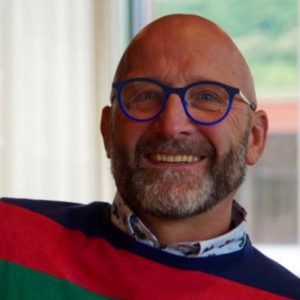
Originally my flight from
Goa to Mumbai was scheduled as an evening flight with a short layover
till my next flight to Abu Dhabi. When the evening flight got cancelled
however I was rebooked on an early afternoon flight which left me with a
7 hour layover in Mumbai, something I was not particularly looking
forward to. I started to look for something to do in that timeframe and
initially I wanted to do a street food tour, that was until I came
across Slumgods.
Slumgods, a company run and
owned by three enthusiastic and motivated young men who were born and
raised in Dharavi, Mumbai’s and Asia’s biggest slum. Their mission is
not only to show people the positive side of life in the slums, but also
to give back to their community by offering hip hop and rap classes to
the children of Dharavi.
Although I was hesitant at
first I finally decided a trip of the slums would not only be a
worthwhile trip to do but also a unique opportunity to get an inside
view of the slums. So I booked a private tour with slumgods and was
ready to see another side of Mumbai.
After my flight from Goa to
Mumbai I went to the exit of the airport where Sagar, my guide, was
already waiting for me and he brought a friend, Maze, who was learning
to become a tour guide. In the car Ali, our driver, was waiting and so
the trip began.
With the traffic being
quite decent for Mumbai we headed off to Dhobi Ghat to see the
Dhobiwallahs, better known as human washing machines. An amazing amount
of laundry from Mumbai’s largest hospitals, hotels and private customers
are still washed and dried by hand. An impressive way of labeling the
laundry ensures it is returned clean to their owners.
The next stop was
Khamatipura, the infamous red light district. Sagar told me the
horrendous stories on how young girls and women were brought under false
promises to Mumbai and locked in cages until their will was broken and
they were willing to work as prostitutes. Going to the police was no
option as they were paid bribes to keep the business going. A sad story
indeed and obviously I did not make any pictures over here as I did not
want to abuse the women more than they already are.
India is a country of
extremes as we all know so what better place to see before we went into
the slums than Mumbai’s famous 1 billion US dollar apartment called
Antillia. A 27 storey high tower block, 3 helipads, hanging gardens and
built for India’’s richest man and his family. Still they have not moved
in as the building does not comply with certain Indian architectural
principles and it would bring bad luck to move in. The contrast of where
I was going could not have been bigger.
Before we went to the slums
we took a short break at a local cafe opposite the Mahim West railway
station which was next to Dharavi. For me it felt more like an afternoon
with friends than a tour and I absolutely loved the personal touch that
both Sagar and Maze provided, our afternoon together was a real
exchange of cultures with questions coming from both sides.
Around the railway station
there was the usual activity, the sideways were covered with people
preparing the outlet of their shop, hanging around or just having a nap
in the middle of the chaotic streets of Mumbai.
At the other side of the
railway I could see the first houses of Dharavi, it seemed all of them
had been glued together using every inch of available space and every
bit of material available. By now I was getting really curious as I had
no idea of what to expect on the other side of the tracks.
Whilst we crossed the
pedestrian bridge below us the crowded commuter trains of Mumbai passed
by. With 7,5 million commuters being transported on a daily basis I can
imagine how it must be like traveling on one of these trains.
Unfortunately there was no time to experience that so I have to leave
that till another visit.
Dharavi itself is spilt up
in several areas and the first part we were about to visit housed the
more polluting of industries. There were small factories all built
closely together where a lot of recycling was done. Plastic, aluminum
cans and so on. All collected from all over Mumbai and being recycled to
be the base for a second or maybe even a third life, a good way of
re-using all the resources and preventing the earth from being polluted
even more than it already is. Every inch of space was used. Not only was
I impressed by the amount of people working here, surviving here in
harsh conditions, but even more so by the smiles on their faces. It
seemed to me people had accepted where they were living and committed to
making the best of it. I saw people working hard for many hours a day
in what should simply be described not the most comfortable
circumstances, all for a few Euros a day of hard earned money to help
their families survive.
I felt like having arrived
in an ants nest where non-stop activity was surrounding me. Delivering
garbage, recycling it into raw materials, washing clothes, and where
there was some space left a shop was cramped into where daily supplies
were sold.
Both Sagar and Maze made
all efforts to show me around and made sure I did not miss anything of
what was going on. A dazzling and mind-blowing experience for me to see.
They easily found their way through the narrow alleys and made sure I
could see all the industrial activity going on and explained the
process. I am not sure how healthy some of the recycling activities are
for the employees, but staying healthy seems to be of minor importance
for those workers who had families to support. In between the recycling
areas I could spot small ateliers where mainly men were sewing clothes
non stop. They were the lucky ones as they were making more money than
the workers doing the recycling and were able to work in a more clean
working space. Seeing what was going on everywhere made me feel
tremendously fortunate and left me with big respect for all those people
working and living here. Leather tanning was another industry to be
seen at places and truck loads of animal skins were transported before
being tanned in small, hidden away factories.
The two main parts of
Dharavi, the industrial part and the residential area were divided by a
major street. In a drainage channel I could see some rats moving by,
somehow they did not seem shy and have found their way of living in this
place where every inch was used by one lifeform or another.
The residential area itself
was again split up in three areas. A Muslim, a Hindhu and a Christian
area. Although separated by religion I could feel the sense of unity
through the neighborhood. We even passed a temple which although being
mainly Hindhu had some muslim symbols in order to further show the
unity. For me it was an amazing experience when Sagar and Maze led me
through the small alleys through the areas which seemed to be developed
with only one thing in mind, house as many people in a small area as you
possibly can. The houses were small and had no private facilities. In
order to make up for that there were communal toilets spread out through
the area, facilities I was more than happy to see from the outside but
were not inviting enough for further inspection.
Electricity was another
amazing aspect over here, more than once I had to bend over to avoid
electricity lines hanging over the narrow alleys. I had no idea how it
was functioning, how shortcuts were prevented but then somehow, it
seemed to come together and work one way or another…
By now, in the heart of
Dharavi, I felt very much at ease and was convinced I had made the right
decision. With Sagar and Maze around I knew I was having the best
experience, even from an outsider’s point of view. They helped me to
understand the slums a bit better and instead of spreading doom and
gloom and focus on the negative aspects they ensured I felt the spirit
that exists in this slum, a spirit of hope, a strong spirit of survival,
a spirit of humanity. Yes, it might be a congregation of poverty, a
congregation of people who did not have the luck I had myself to be born
and raised in a environment where I did have the chance to grow to who I
am right now, but that was no excuse for the people to let themselves
down. I could feel a sense of pride to make the best of the life that
was given to them.
Our last stop was at an
area where pottery was made. Once again, all leftovers from the other
industries in the area were used to burn and produce the heat required
to bake the pots.
Time was going by fast and
somehow I felt I could have spent some more time over here to immerse
myself and learn about an area most people avoid during their visit to
India. But somehow I felt this was an integral part of India. In order
to understand India one should not only visit the Taj Mahal, The Ghat’s
in Varanasi or the marvelous palaces in Rhajastan. In order to get to
know India, a visit to the slums should be part of the experience. After
almost three weeks of total relaxation and yoga in South Goa I was in
the right state of mind to experience this other part of India. By the
time Sagar and Maze dropped me off at the airport I was speechless and
did not know how to express myself. I considered myself extremely lucky
to have been able to see and experience a bit of Dharavi. A true eye
opener for a wider reality that most of us prefer to ignore. I have
experienced the hard working people, the unity but most of all the
strong will to survive. Sagar and Maze helped me not to feel sorry for
the people but shared the pride of the people born and raised over here.
Guys, I have learned a lot from my visit, thank you for sharing this with me and thank you for this true feeling of friendship, I would not have missed this experience for anything in the world! I will be more than happy to come back, but then, as you offered, as a friend, not as a guest. I could not have wished for a better way of spending my time between two flights. It certainly changed my perspective of India, in the most positive way possible!




























